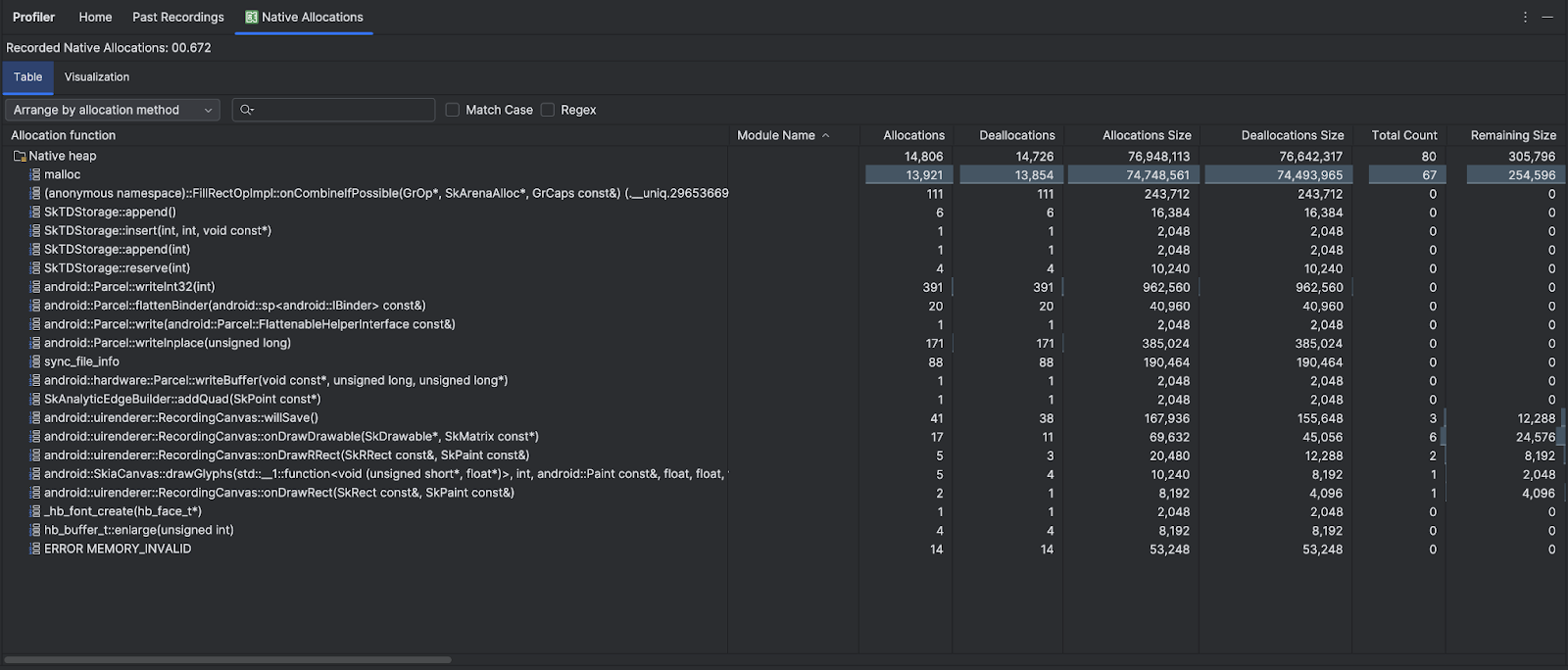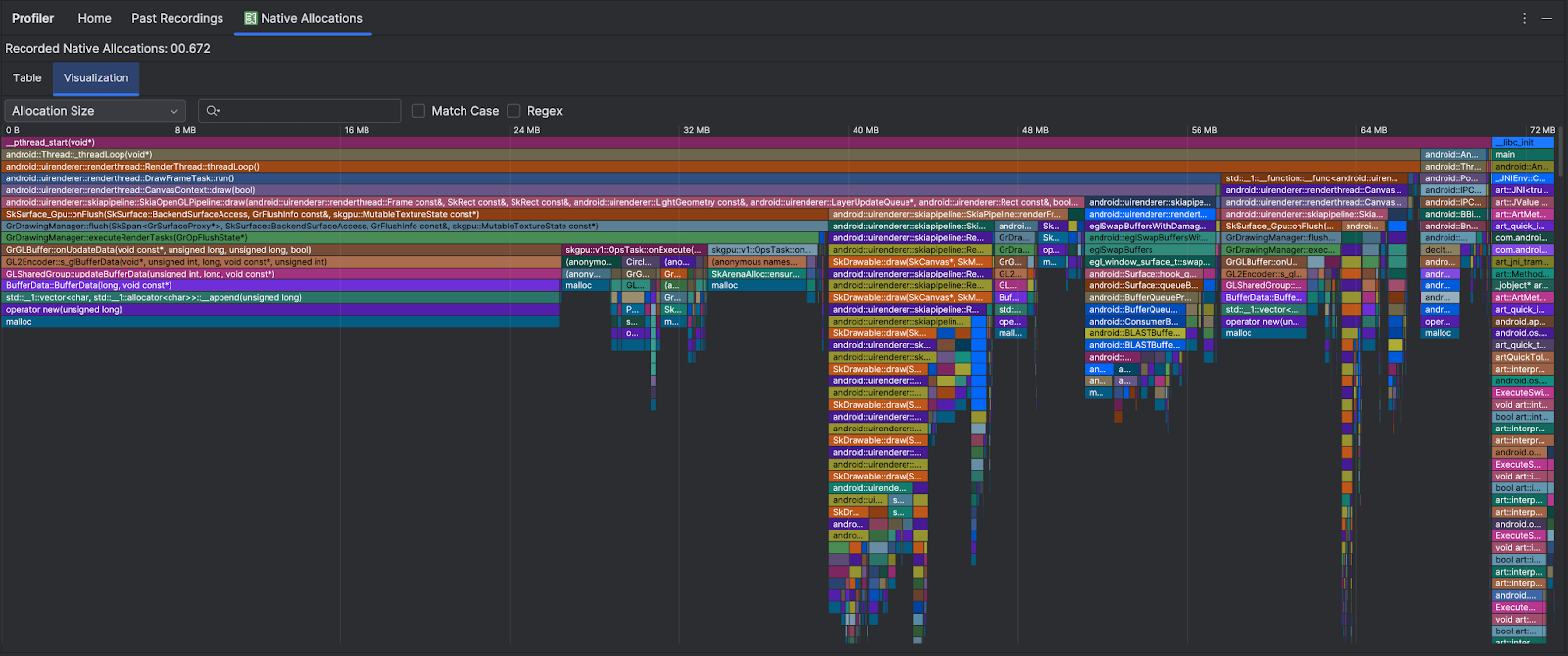네이티브 코드를 작성 중이며 메모리 사용량이 우려되는 경우 앱의 네이티브 할당을 프로파일링하여 최적화할 기회가 있는지 확인하는 것이 좋습니다.
앱 메모리를 프로파일링해야 하는 이유
Android는 관리되는 메모리 환경을 제공합니다. 즉, 앱에서 일부 객체를 더 이상 사용하지 않는다고 판단되면 가비지 컬렉터가 사용되지 않는 메모리를 힙에 돌려보냅니다. Android에서 사용되지 않는 메모리를 찾는 방법은 끊임없이 개선되고 있지만, 모든 Android 버전의 특정 시점에서 시스템이 코드를 일시중지해야 합니다. 대부분의 경우, 이러한 일시 중지는 감지할 수 없는 수준입니다. 하지만, 시스템에서 메모리를 수집할 수 있는 것보다 빠르게 앱에서 메모리를 할당하는 경우 컬렉터가 할당하기에 충분한 메모리를 확보하는 동안 앱이 지연될 수 있습니다. 이로 인해 앱이 프레임을 건너뛰고 눈에 띄게 느려질 수 있습니다.
앱의 메모리 사용을 줄일 수 있는 프로그래밍 방법에 관한 정보는 앱 메모리 관리를 참고하세요.
네이티브 할당 개요
메모리 사용량 추적 (네이티브 할당) 작업을 실행하면 Android 스튜디오 프로파일러가 지정된 기간 동안 네이티브 코드에서 객체의 할당 및 할당 해제를 추적하고 다음 정보를 제공합니다.
- Allocations: 선택한 기간 동안
malloc()또는new연산자를 사용하여 할당된 객체의 수입니다. - Deallocations: 선택한 기간 동안
free()또는delete연산자를 사용하여 할당 해제된 객체의 수입니다. - Allocations Size: 선택한 기간 동안 모든 할당의 집계 크기(단위: 바이트)입니다.
- Deallocations Size: 선택한 기간 동안 확보되는 모든 메모리의 집계 크기(단위: 바이트)입니다.
- Total Count: Allocations 열의 값에서 Deallocations 열의 값을 뺀 값입니다.
- Remaining Size: Allocations Size 열의 값에서 Deallocations Size 열의 값을 뺀 값입니다.

시각화 탭에는 선택한 기간 동안 호출 스택의 네이티브 코드와 관련된 모든 객체의 집계된 보기가 표시됩니다. 기본적으로 표시된 인스턴스가 있는 콜 스택이 차지하는 총 메모리 양을 보여줍니다. 첫 번째 행에는 스레드 이름이 표시됩니다. 기본적으로 객체는 할당 크기를 기준으로 왼쪽에서 오른쪽으로 쌓입니다. 드롭다운을 사용하여 순서를 변경하세요.

기본적으로 프로파일러는 2048바이트 크기의 샘플을 사용합니다. 메모리 2048바이트가 할당될 때마다 메모리의 스냅샷이 만들어집니다. 샘플 크기가 작을수록 스냅샷 생성 빈도가 높아지고 메모리 사용량에 관한 보다 정확한 데이터가 생성됩니다. 샘플 크기가 클수록 데이터의 정확도가 떨어지지만 기록하는 동안 시스템 리소스가 더 적게 소비되고 성능이 향상됩니다. 샘플 크기를 변경하려면 녹음 구성 수정을 참고하세요.

